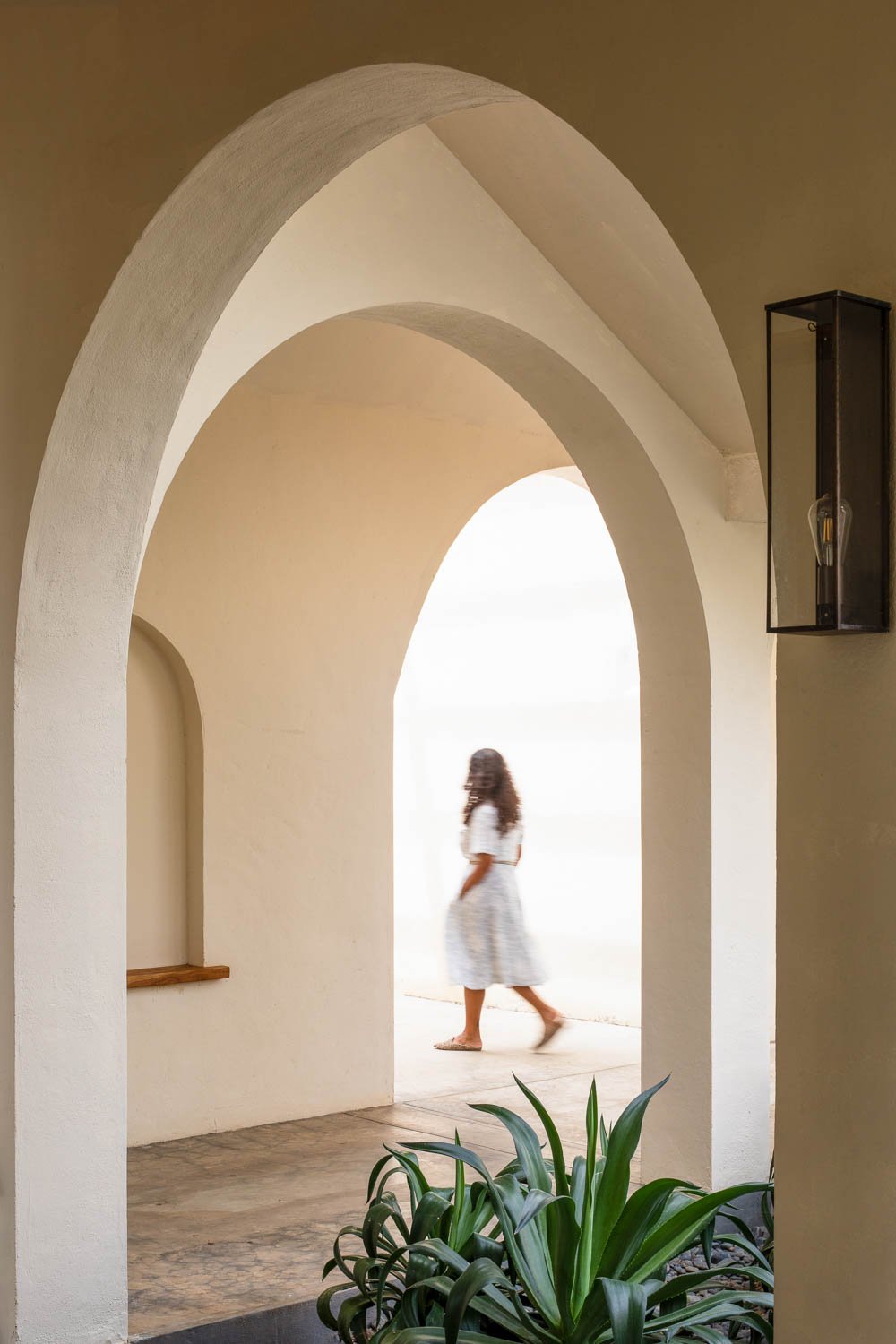




The residence is organized around a central patio, the spatial and environmental core of the project. A wrap-around vaulted arcade frames the patio, which features a water element that supports evaporative cooling throughout the day. This central void facilitates natural cooling via cross ventilation, maximizes daylighting, and provides a shaded communal area for guests. The orientation of the patio allows uninterrupted views—to the ocean, to the forest, and to interior spaces—intentionally connecting all sightlines to the context beyond the architecture.
The massing of the main house is stacked around this central courtyard, generating shade for the heart of the home while allowing elevated bedroom suites to capture birds-eye views across the landscape. The spatial strategy also includes shaded terraces leading to two detached guest pavilions, placed slightly apart from the main volume for privacy, yet spatially and visually integrated into the overall composition.
The architectural language is a modern application of regional vernacular. The design incorporates functional indoor-outdoor living spaces, integrates gardens into the interior architecture, and uses site-specific materials to create a light, open, and environmentally responsive structure. Locally available teak and concrete were used for the lightweight roof structures and slabs, balancing structural efficiency with ecological logic. The house is raised slightly off the ground and features long pergolas planted with bougainvillea, adding natural shading and reducing solar heat gain natural shading and reducing solar heat gain.
Each façade was carefully designed to maintain clear proportional relationships between plan and section. The material palette—earth-toned, textured, and subdued—was chosen to harmonize with the surrounding environment. The resulting design achieves a clean, modern aesthetic with slim profiles, passive climate performance, and a strong sense of place. The surrounding gardens introduce tropical color and vibrancy, reinforcing the project's connection to its ecological setting while maintaining a sense of playful informality throughout.
Designed to host 12–18 people comfortably, Casa Las Tortugas embodies a sensitive, integrated approach to site, program, and climate—one that activates the entire property while minimizing environmental impact and enhancing the guest experience.













Studio Tlalli is a high-end design studio that produces furniture and objects made from sustainable materials harvested from our private ecological reserve and assembled by hand in our shop in Pedasi, Panama. Las Tortugas was largely furnished with custom furniture by Studio Tlalli.









2021
Residence
IM-KM Architecture and Planning
Kristin Morales + Ivan Morales
Mary Elizabeth Burton, Rene Nava, Betsy Cerrud de Quintero, Sasha Cole, Deborah Cavaliere, Emily Kinskey
Roberto Cigurrista (EMP)
Francisco Cedeno (Structural)
Construcciones del Este S.A. + Bahia de Puerto Escondido, Juan Herrera, Betsy Cerrud de Quintero
Reserva Panamaes team
Team: Saul Cedeno, Horacio Peralta
La cantina | Install: Sebastian Boniche